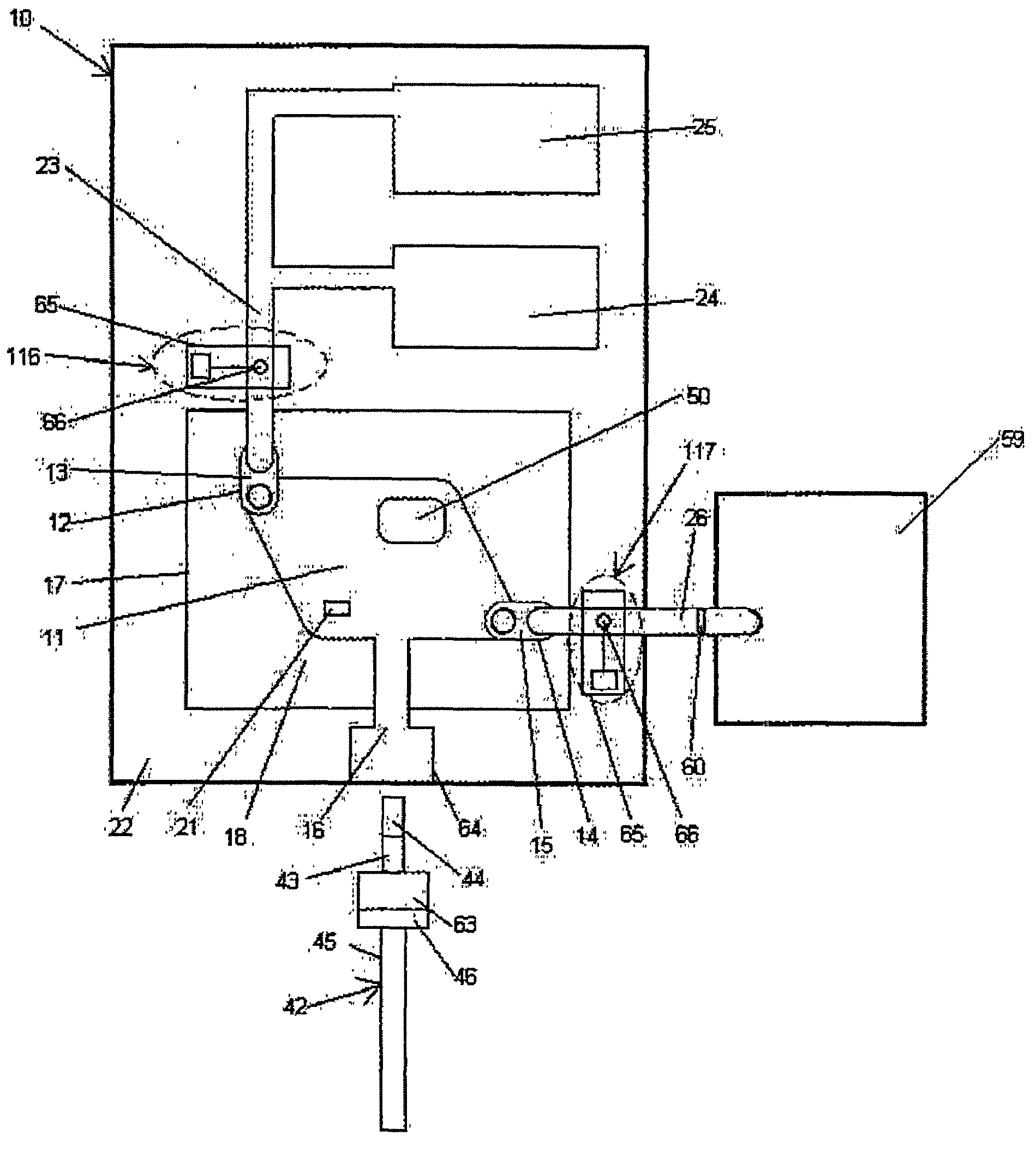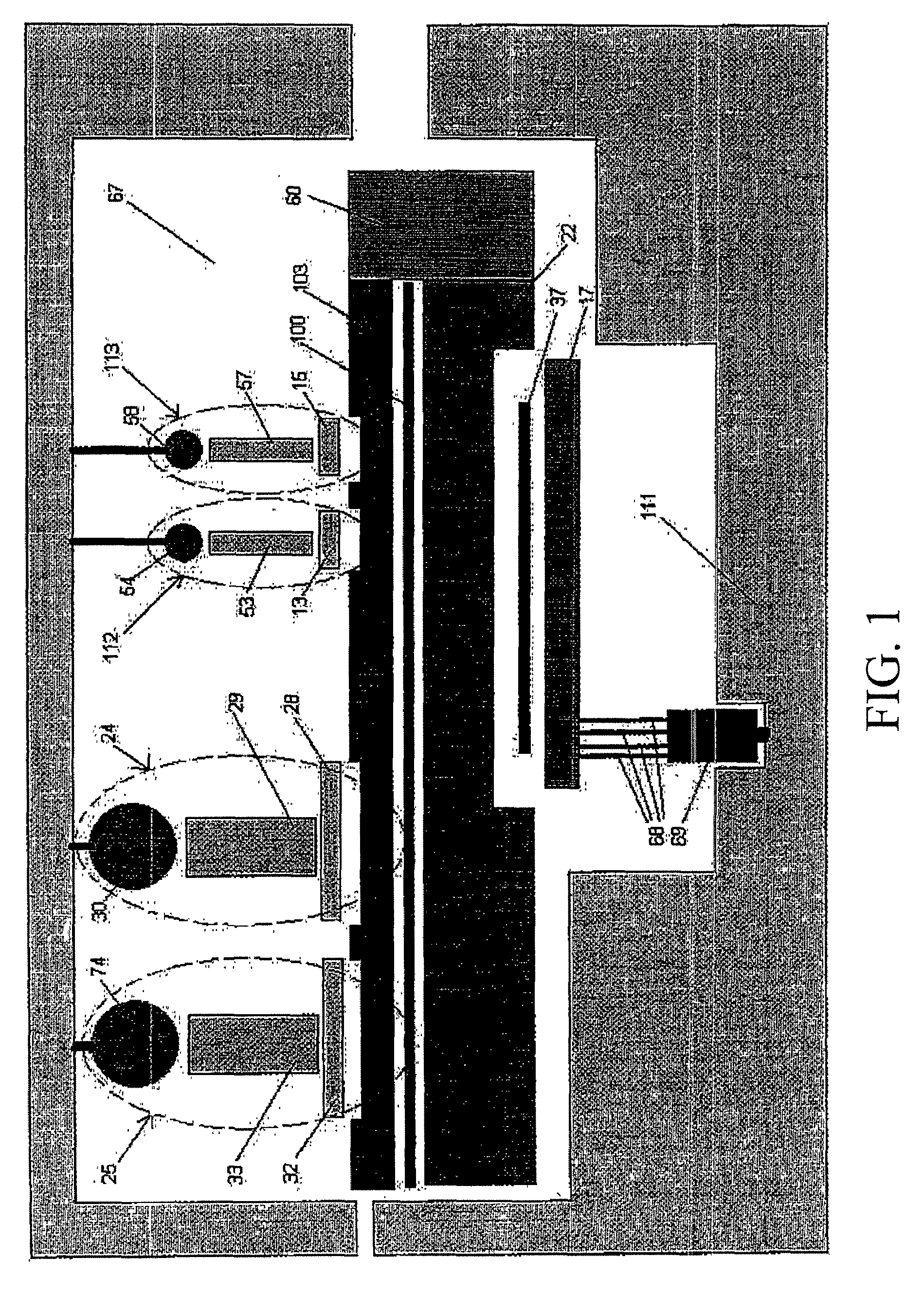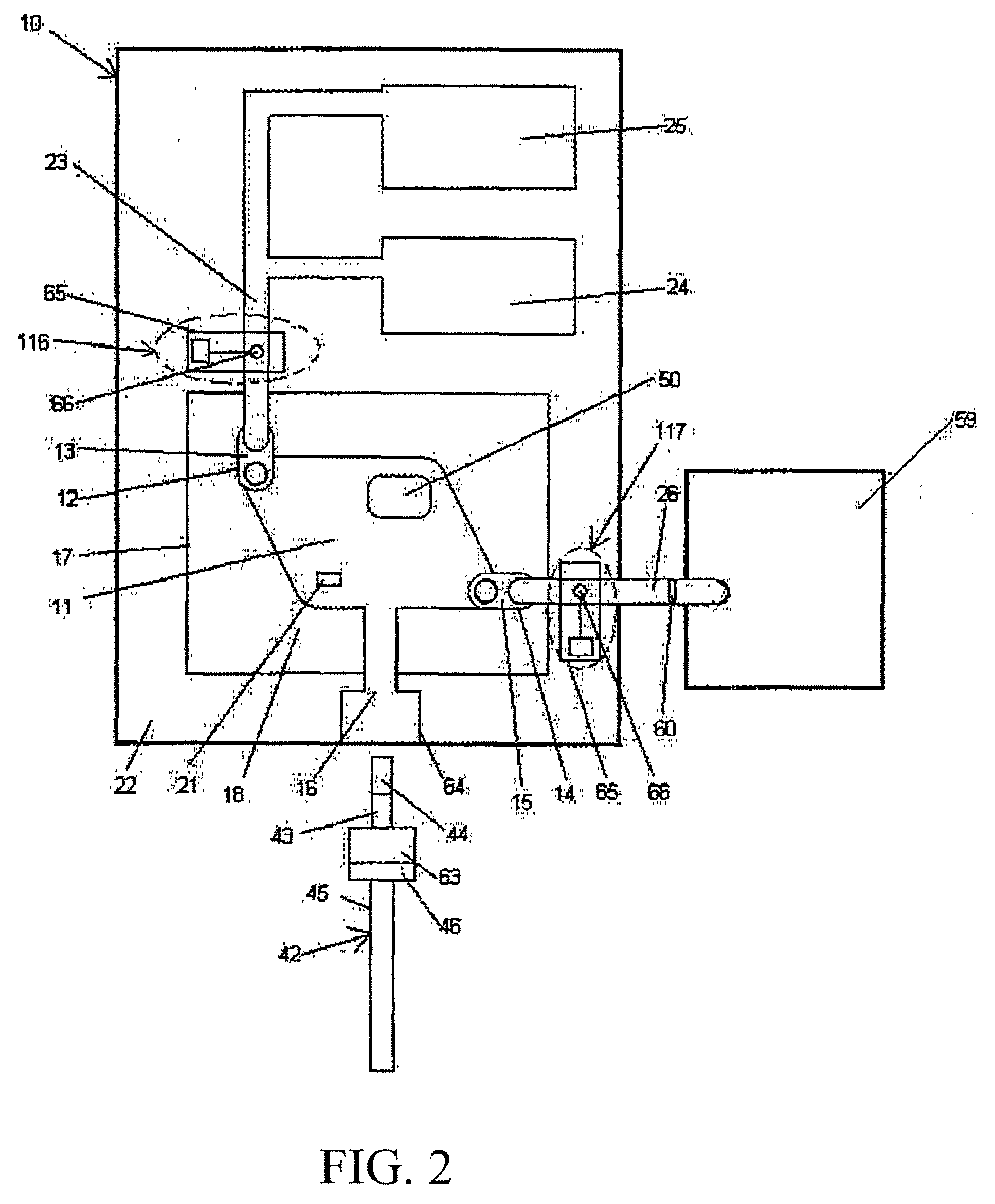Molecular diagnostics amplification system and methods
a nucleic acid and amplification system technology, applied in the field of integrated nucleic acid test cartridges, can solve the problems of time taken between, several hours and even days, and the use of non-portable and operationally complex instruments
- Summary
- Abstract
- Description
- Claims
- Application Information
AI Technical Summary
Benefits of technology
Problems solved by technology
Method used
Image
Examples
example 1
[0103]
PCR Amplification of Hemachromatosis (Hfe)C282Y allele and detectionOligodesigna-Characteris-tionSequence (5′–>3′)ticsIs083 / 5Bio / C*CAGA / iBiodT / CACAATGAHfe ContraGGGGCTGATC*C / sequenceIs084 / A*CTTCATACACAACTCCCGCGWt C282 SNPTTGCATAACT / iSpC3 / CCCCTGGGdiscriminat-GAAGAGCAGAGATATATGT*G / ting primerwith Sc com-plementIs085 / G*CGGCGCGATGCGCCACCTGCMut Y282 SNPCGC / iSpC3 / CCCCTGGGGAAGAGCdiscriminat-AGAGATTTACGT*A / ing primerwith anti-MBWcomplementIs071amino_modifier_C12-T20-MBW captureGCGGCAGGTGGCGCATCGCGCCGCIs028.L2amino_modifier_C12-T20-Sc CaptureAGTTATGCAACGCGGGAGTTGTwith anti-ScGTATGAAGT
[0104]Designations: 5Bio—5′-biotinylated base; iBiodT—internal dT biotinylated base;*—phosphorothiolate backbone; T20-20 dTs in the sequence; Amino_modifier_C12—5′ amino derivative; iSpC3—spacer / blocker phosphoramidite; Hfe—Hemachromatosis gene, Wt—wild type, Mut—mutant; SNP—single nucleotide polymorphism; MBW selected sequence; Sc selected sequence.
[0105]In a preferred embodiment, the detection device (al...
example 2
[0109]
PCR Amplification of Phenylthiocarbamide (PTC)allele 1 and detection [TAS2R38, Ala49Pro]Oligodesigna-Characteris-tionSequence (5′–>3′)ticsIs095 / A*CTTCATACACAACTCCCGCGTTPTC1 wt withGCATAACT / iSp18 / GGTGAATTTTTGSc complemen-GGATGTAGTGAAGAGGTAG*G / tary sequenceIs096 / G*CGGCGCGATGCGCCACCTGCCPTC1 mut withGC / iSp18 / GGTGAATTTTTGGGATGMBW comple-TAGTGAAGAGTCAG*C / mentaryregionIs101 / 5Bio / T*GG / iBioT / CGGCTCTTACCTPTC contraTCAGGCT*G / sequence withbiotinylatednucleotidesIs071amino_modifier_C12-T20-MBW captureGCGGCAGGTGGCGCATCGCGCCGCIs028.L2amino_modifier_C12-(T)20-Sc CaptureAGTTATGCAACGCGGGAGTTGTGwith anti-ScTATGAAGT
[0110]Designations: 5Bio—5′-biotinylated base; iBiodT—internal dT biotinylated base;*—phosphorothiolate backbone; T20—20 dTs in the sequence; Amino_modifier_C12—5′ amino derivative; PTC—phenylthiocarbamide gene, Wt—wild type, Mut—mutant; SNP—single nucleotide polymorphism; MBW—selected sequence; Sc—selected sequence.
[0111]In a preferred exemplary embodiment, the detection device 59 is ...
PUM
| Property | Measurement | Unit |
|---|---|---|
| thickness | aaaaa | aaaaa |
| internal volume | aaaaa | aaaaa |
| temperatures | aaaaa | aaaaa |
Abstract
Description
Claims
Application Information
 Login to View More
Login to View More - R&D
- Intellectual Property
- Life Sciences
- Materials
- Tech Scout
- Unparalleled Data Quality
- Higher Quality Content
- 60% Fewer Hallucinations
Browse by: Latest US Patents, China's latest patents, Technical Efficacy Thesaurus, Application Domain, Technology Topic, Popular Technical Reports.
© 2025 PatSnap. All rights reserved.Legal|Privacy policy|Modern Slavery Act Transparency Statement|Sitemap|About US| Contact US: help@patsnap.com



